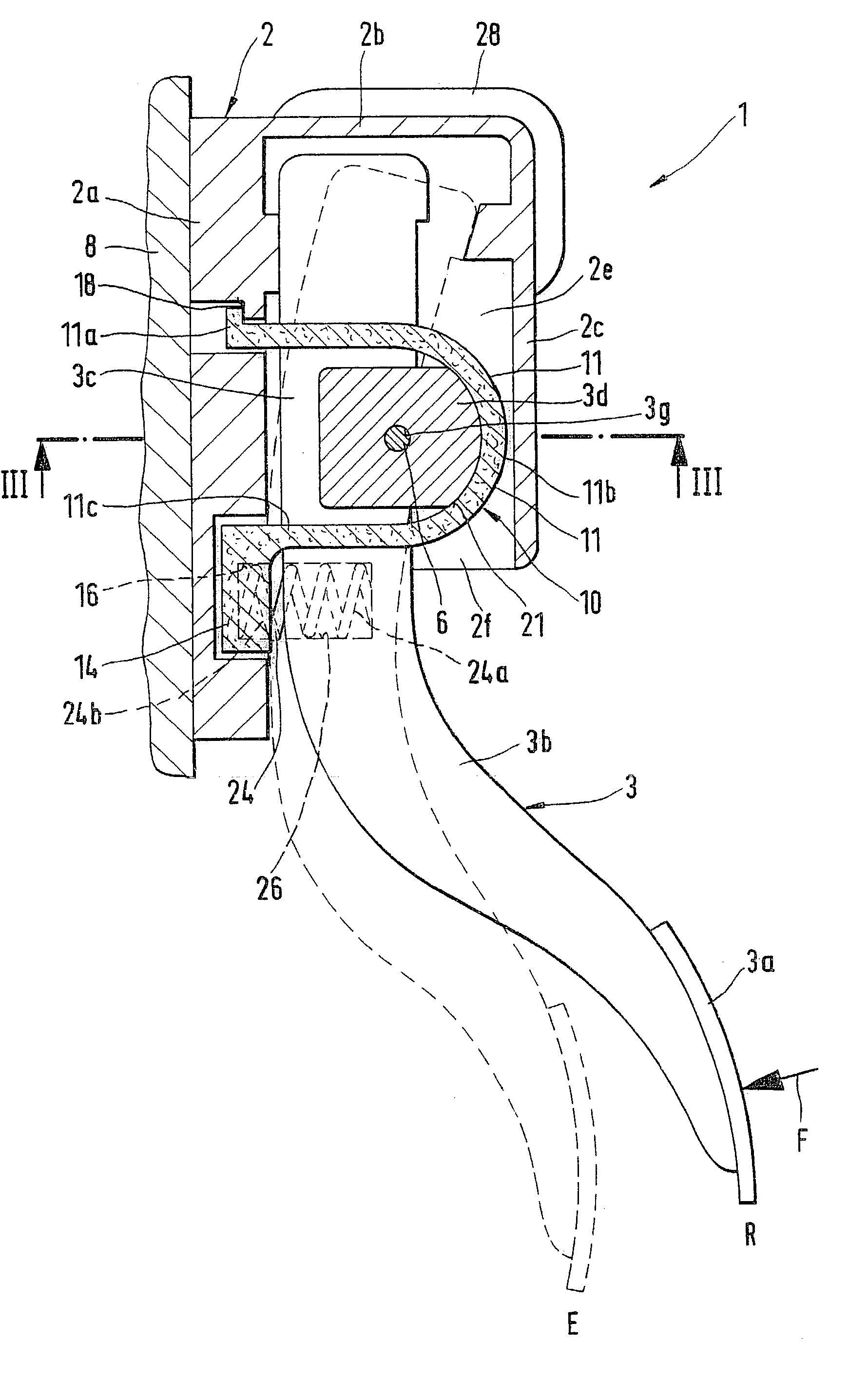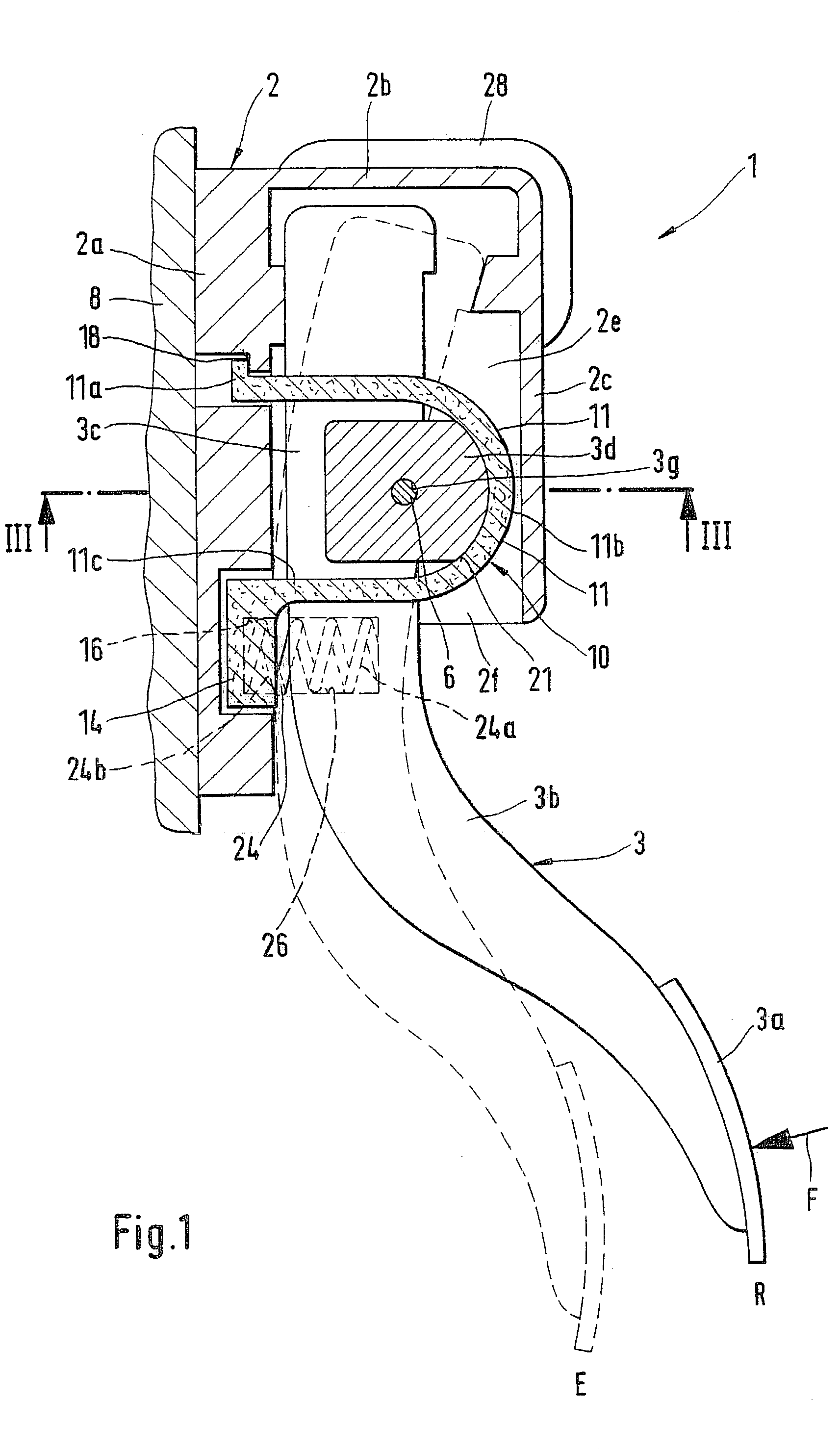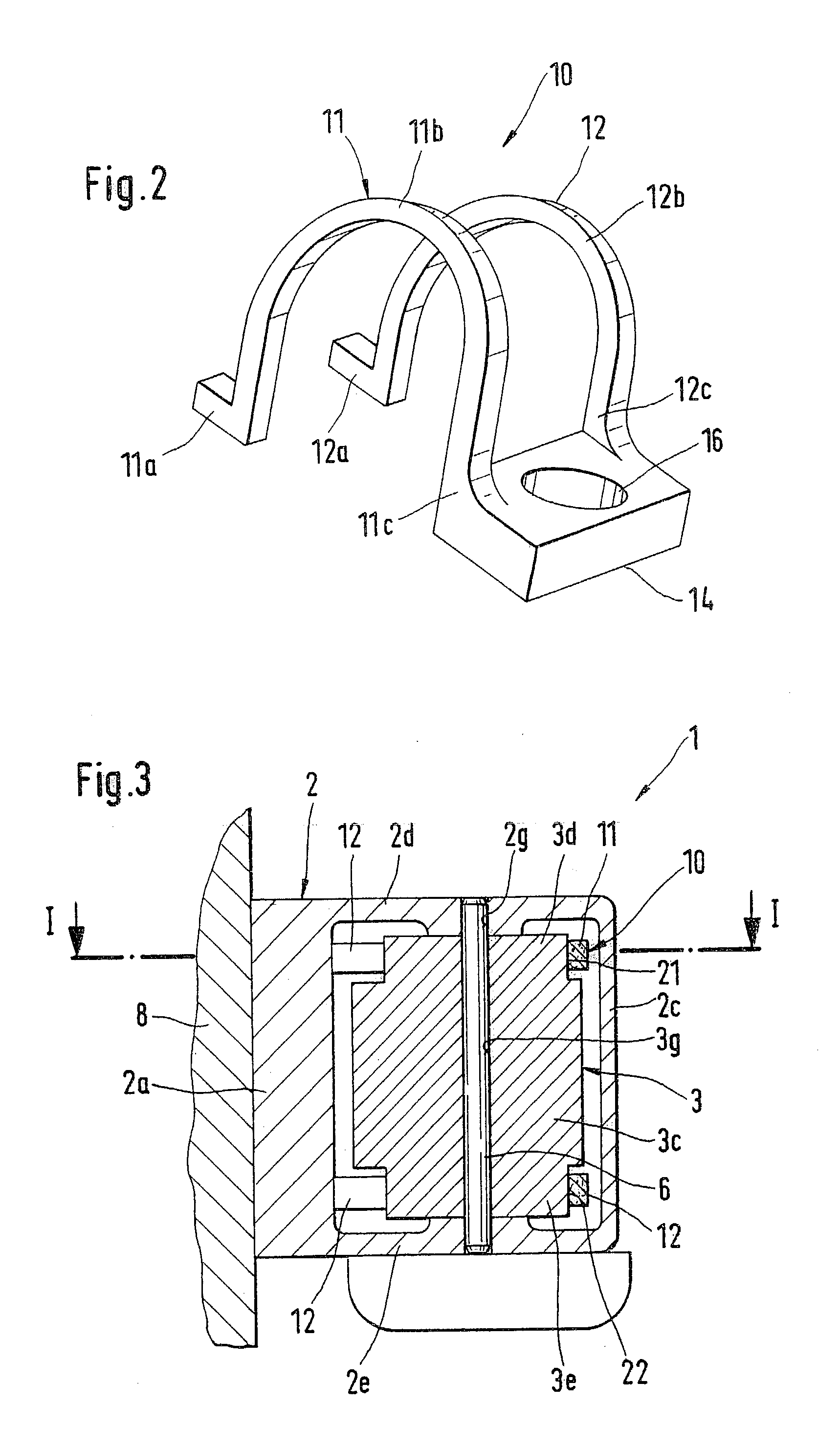Accelerator pedal module
- Summary
- Abstract
- Description
- Claims
- Application Information
AI Technical Summary
Benefits of technology
Problems solved by technology
Method used
Image
Examples
Embodiment Construction
[0025] The accelerator pedal module 1 embodied according to the invention can be used to control different driving engines. For example, the drive engine is an Otto engine whose throttle valve is adjusted with a servomotor. In this instance, the accelerator pedal module is used to transmit electrical signals which are supplied to the servomotor that adjusts the throttle valve. However, the driving engine can also be a diesel engine or an electric motor, for example; in these cases as well, electrical signals are emitted by the accelerator pedal module 1 which, appropriately transformed, control the output but of the driving engine.
[0026] The accelerator pedal module 1 is preferably fastened to a part of the vehicle directly in the vehicle driver's range of action. The pedal lever 3 of the accelerator pedal module 1 is frequently also referred to as the gas pedal.
[0027] In all the figures, parts which are the same or function in the same manner are provided with the same reference nu...
PUM
 Login to View More
Login to View More Abstract
Description
Claims
Application Information
 Login to View More
Login to View More - R&D
- Intellectual Property
- Life Sciences
- Materials
- Tech Scout
- Unparalleled Data Quality
- Higher Quality Content
- 60% Fewer Hallucinations
Browse by: Latest US Patents, China's latest patents, Technical Efficacy Thesaurus, Application Domain, Technology Topic, Popular Technical Reports.
© 2025 PatSnap. All rights reserved.Legal|Privacy policy|Modern Slavery Act Transparency Statement|Sitemap|About US| Contact US: help@patsnap.com



